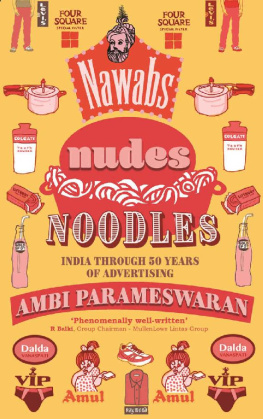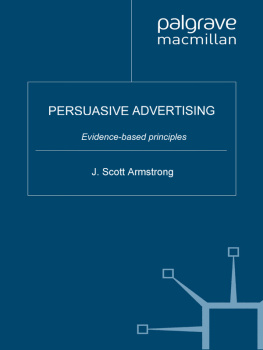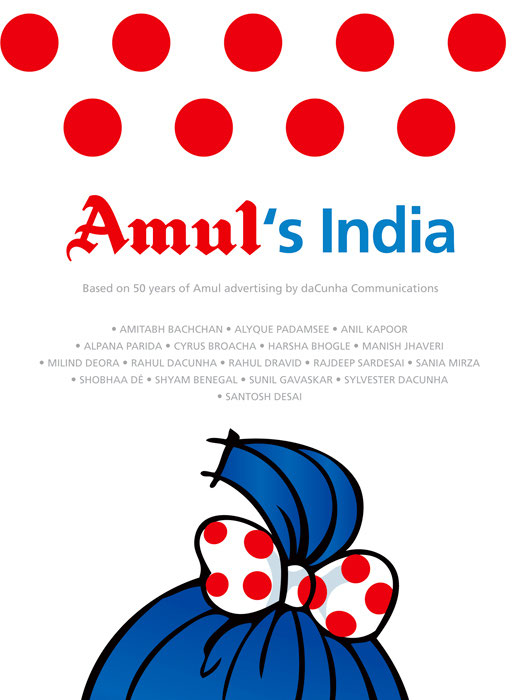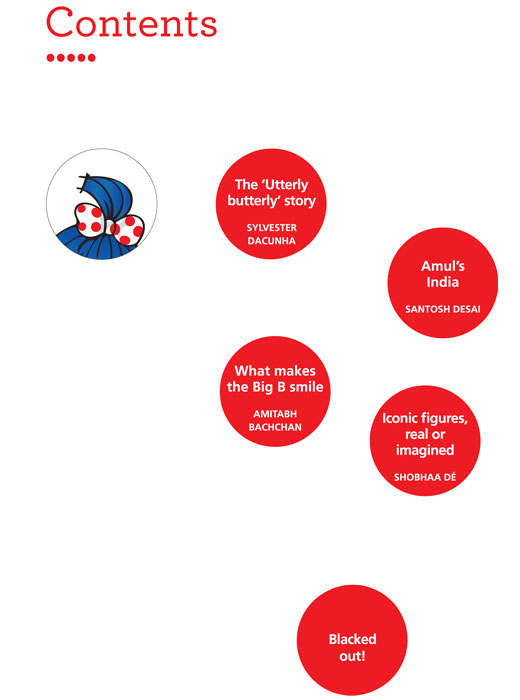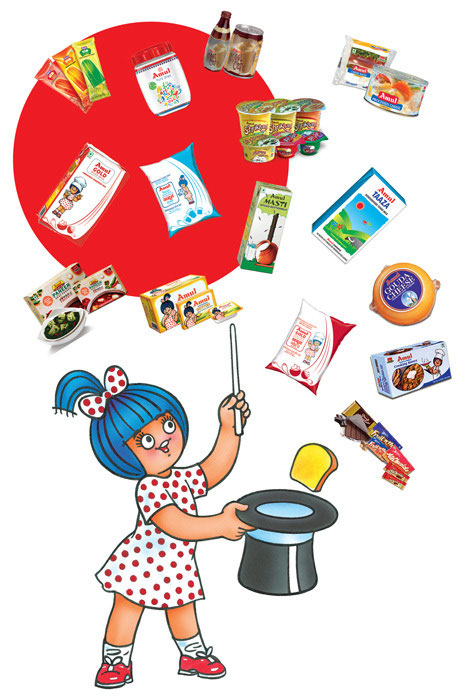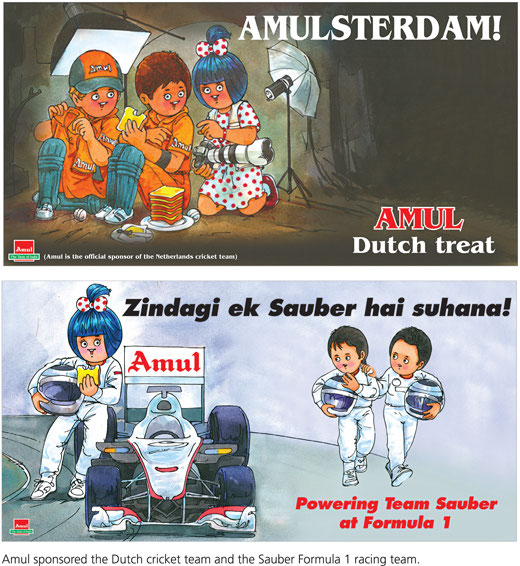Concept, design and co-ordination by DY Works
Based on 50 years of Amul advertising
by daCunha Communications
COLLINS BUSINESS
An imprint of HarperCollins Publishers
Contributors:
| ALPANA PARIDA | MANISH JHAVERI | SANTOSH DESAI |
| ALYQUE PADAMSEE | MILIND DEORA | SHOBHAA D |
| AMITABH BACHCHAN | RAHUL DACUNHA | SHYAM BENEGAL |
| ANIL KAPOOR | RAHUL DRAVID | SUNIL GAVASKAR |
| CYRUS BROACHA | RAJDEEP SARDESAI | SYLVESTER DACUNHA |
| HARSHA BHOGLE | SANIA MIRZA |
Managing Director
Gujarat Co-operative Milk
Marketing Federation Ltd.
Anand, Gujarat.
Amul emerged as an offshoot of the Indian freedom movement, to give poor farmers the best returns for their milk by eliminating middlemen. Since then it has grown into a national brand that is respected and trusted in every corner of the country. The concept Taste of India, the Amul moppet, and the consistent advertising strategy have all contributed to the Amul success story.
A daily and essential food product has to provide the consumer with the confidence that it is not only tasty and nutritious, but that it is produced to the highest hygienic standards, and provided at a fair and acceptable price. This is the assurance that the Amul brand promises, and for over fifty years we have striven continuously to honour this commitment. We have renewed this by meeting, and often surpassing, the customers expectations of quality, value for money, choice, availability and service.
This has been possible with the cooperation and combined efforts of a producer-owned and -controlled integrated system of production, procurement, processing and marketing.
This book portrays how an endearing moppet and her tongue-in-cheek humour helped a milk producers co-operative create a White Revolution. It traces how Amul evolved as a brand by commenting on the popular political and social culture of India over the past four decades. Its topical, humorous and memorable hoardings continue to delight generations of Indians.
DaCunha Communications has been a longtime partner of Gujarat Co-operative Milk Marketing Federation (GCMMF) and is the creator of the Amul hoardings.
DY Works has partnered Amul over the years through brand creation and rejuvenation, and has conceived, designed and created this book.
The book goes beyond being an ordinary anthology to being a chronicle of India through the eyes of the Amul girl. The multiple contributions by prominent writers and thinkers add to its richness.
Amul will continue to participate in the development of the country by using all the profits from the sale of this book to honour deserving Class X and XII students in India under the Amul Vidyashree and Amul Vidyabhushan Award schemes.
The Amul campaign tells the stories of India, a hoarding at a time. The hoardings are markers to the popular history of India and have been followed by fans for decades. Seemingly ageless, this long-running campaign has captivated fans across all ages. I have been one such, for almost four decades now.
One cold afternoon in early 2010, I sat in the Amul boardroom with R.S. Sodhi, Kishorsinh Jhala and Jayen Mehta the senior management team at Amul telling them why, with our twin qualifications as Amul brand partners and fans of the most-loved brand in India, we felt it was necessary for Amul to do a book. Amul hoardings, created week after week by daCunha Associates, have captured the spirit of India with beguiling charm and no malevolence for nearly fifty years. We needed to celebrate these hoardings, which have been the most visible face of the brand for so many years, by making a book that would pay tribute to the Toast of a Nation.
The most obvious thought was to put an anthology together, either sequentially neatly classified by decades or by subjects such as politics, Bollywood, sports, etc. Our quick audit of anthologies and their owners revealed characteristic behaviour these were usually hardcover coffee-table books, expensive enough to be bought by the very few, and then put away, unread but brightly displayed on a prominent shelf. Very often, the unsold copies of these anthologies were highly visible on the discounted counters of bookstores and were picked up as gifts that are cheap but appear expensive.
The cartoons or the columns that the anthology collates, work well when you see them appear one at a time, but when they appear all at once, they tend to get repetitive. The iconic Amul hoardings deserved better, and an anthology was not the answer. Given the popularity of the Amul girl, we wanted the book to be accessible to a larger audience and decided to do an affordable paperback instead 2 of a coffee-table tome. As for the content, we wanted to create material that would be read, discussed, mulled over rather than simply glossed over after the reader identified and chuckled over a few of his favourite hoardings.
The Amul hoardings meant different things to different people furthermore, everyone seemed to have their favourites. It became obvious that we needed a book that captured many viewpoints. These would be vignettes creating a patchwork quilt of essays, snippets, selections and trivia by prominent writers, celebrities and the subjects of the hoardings themselves.






